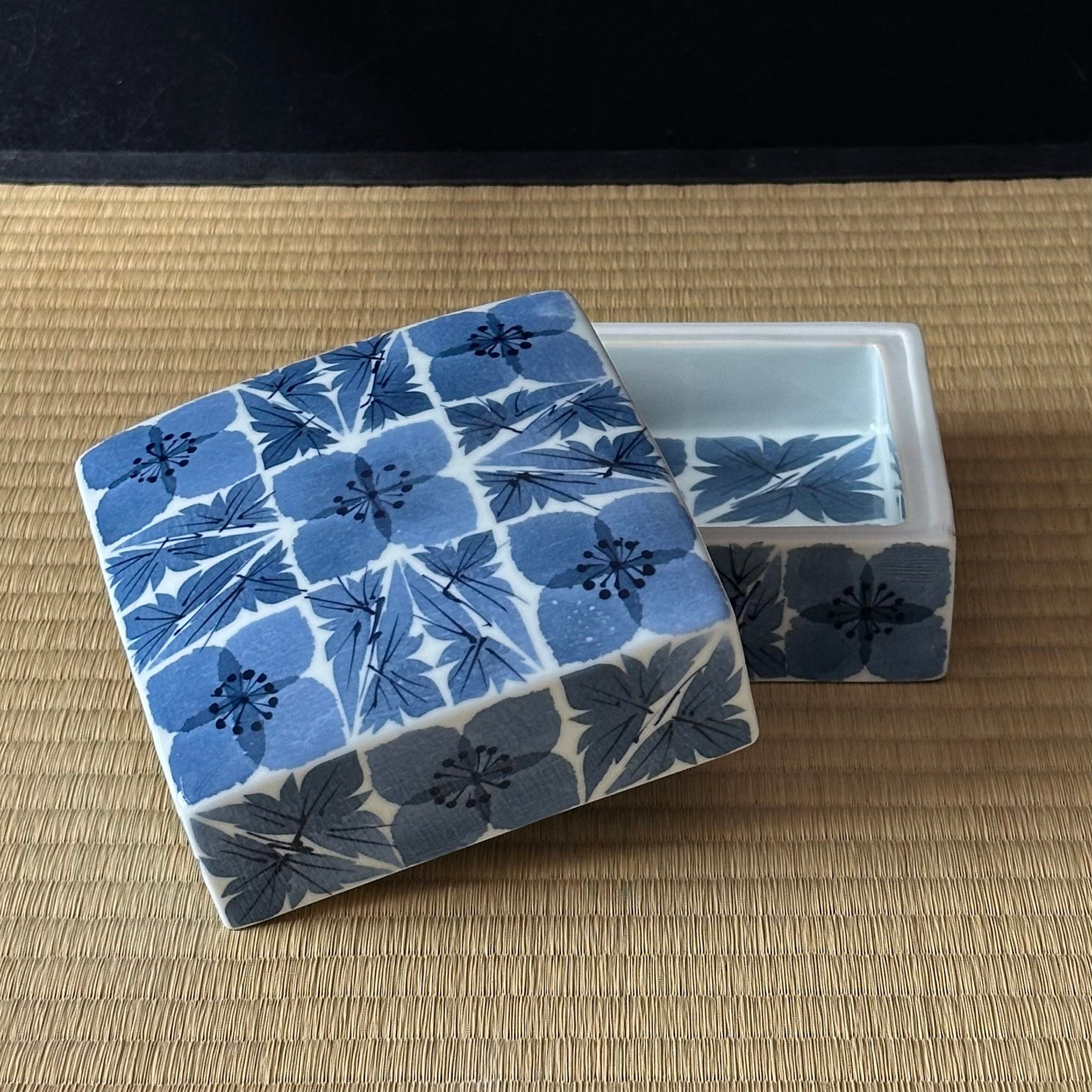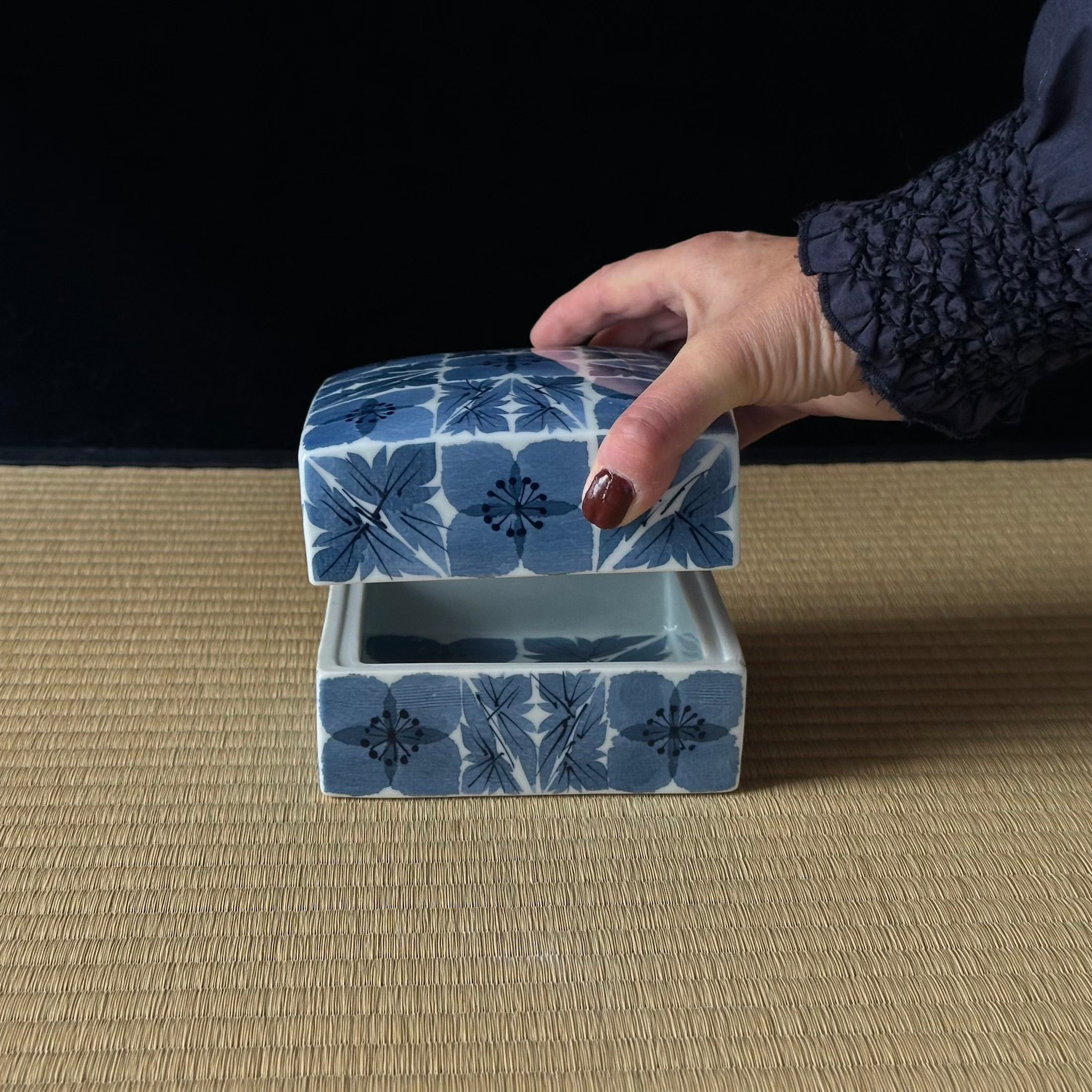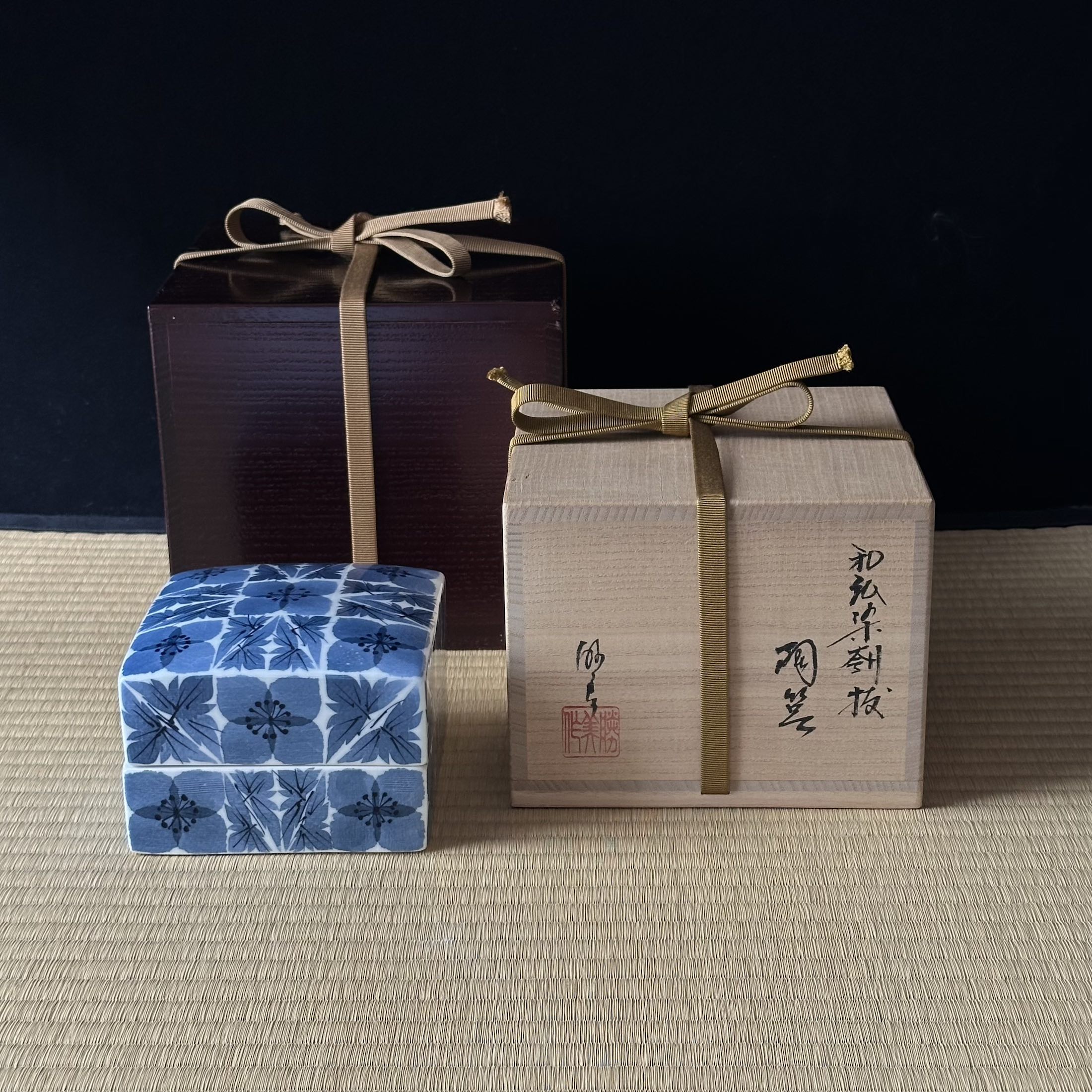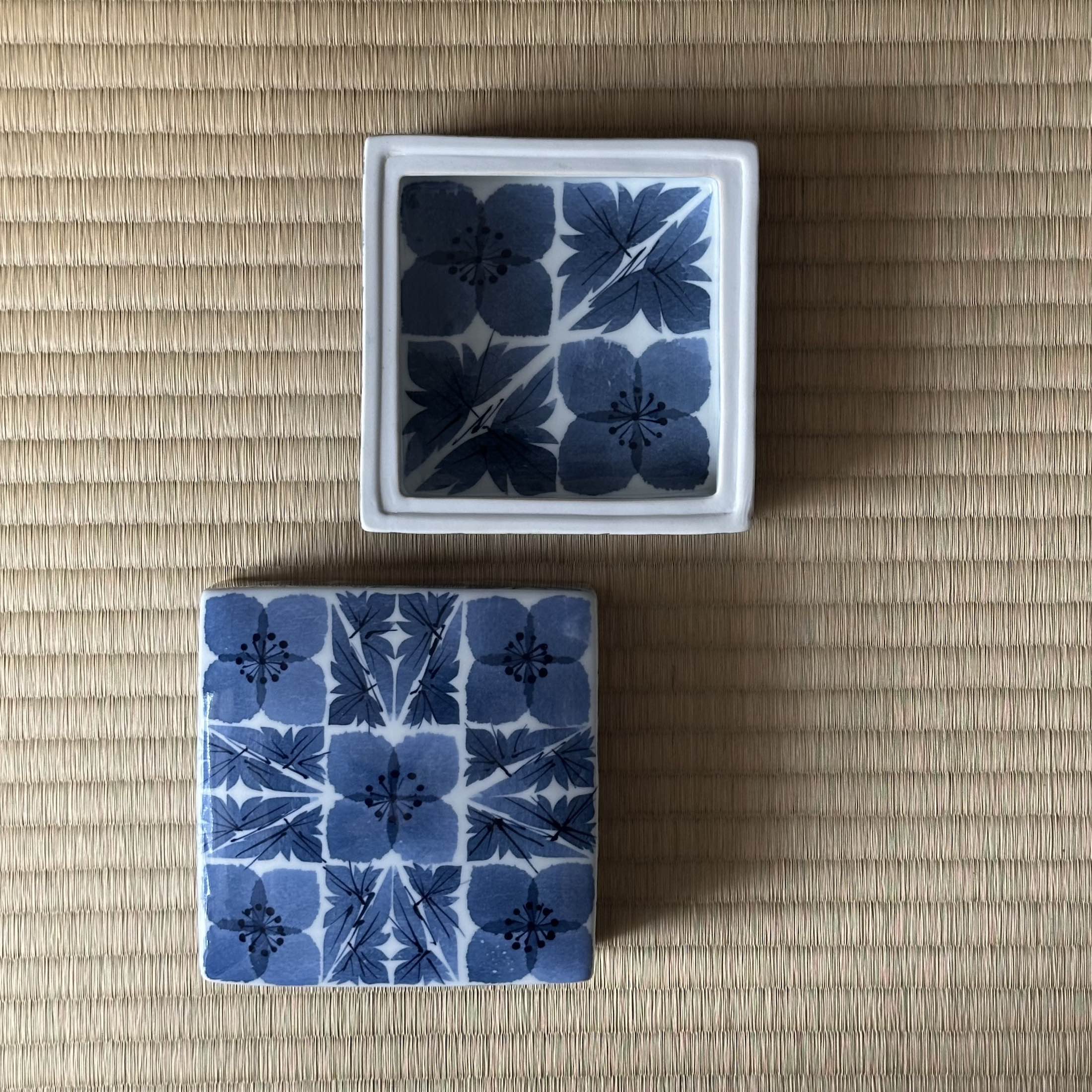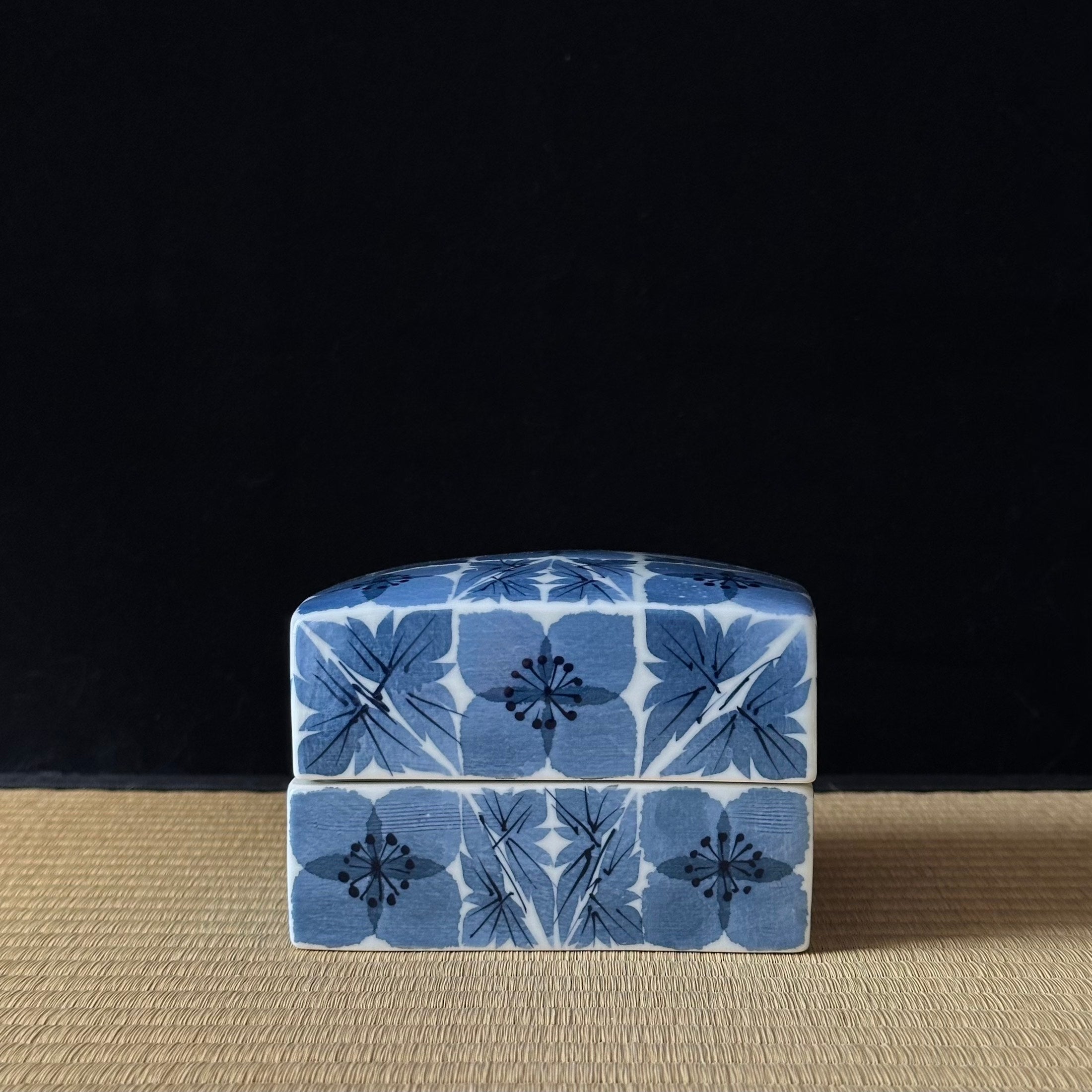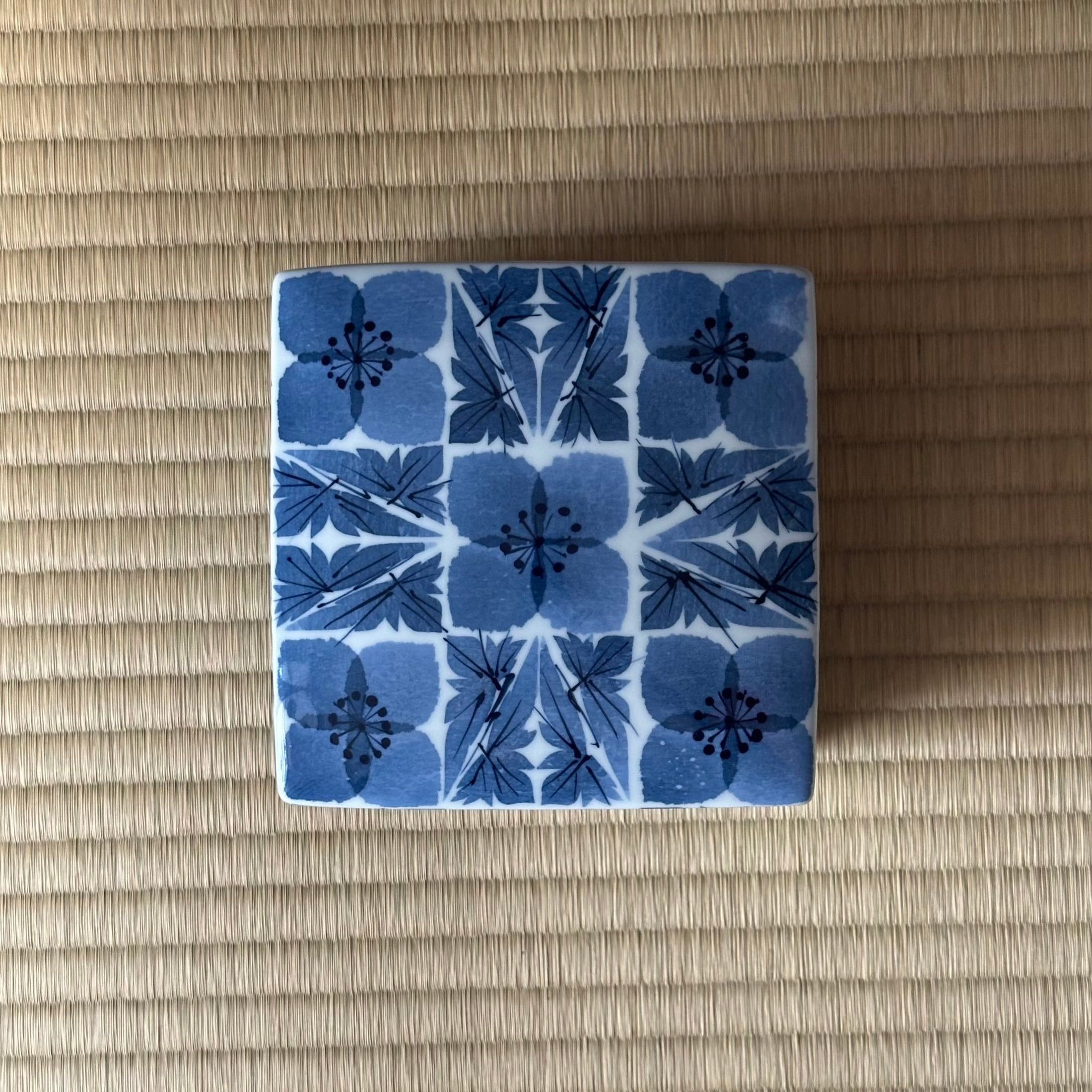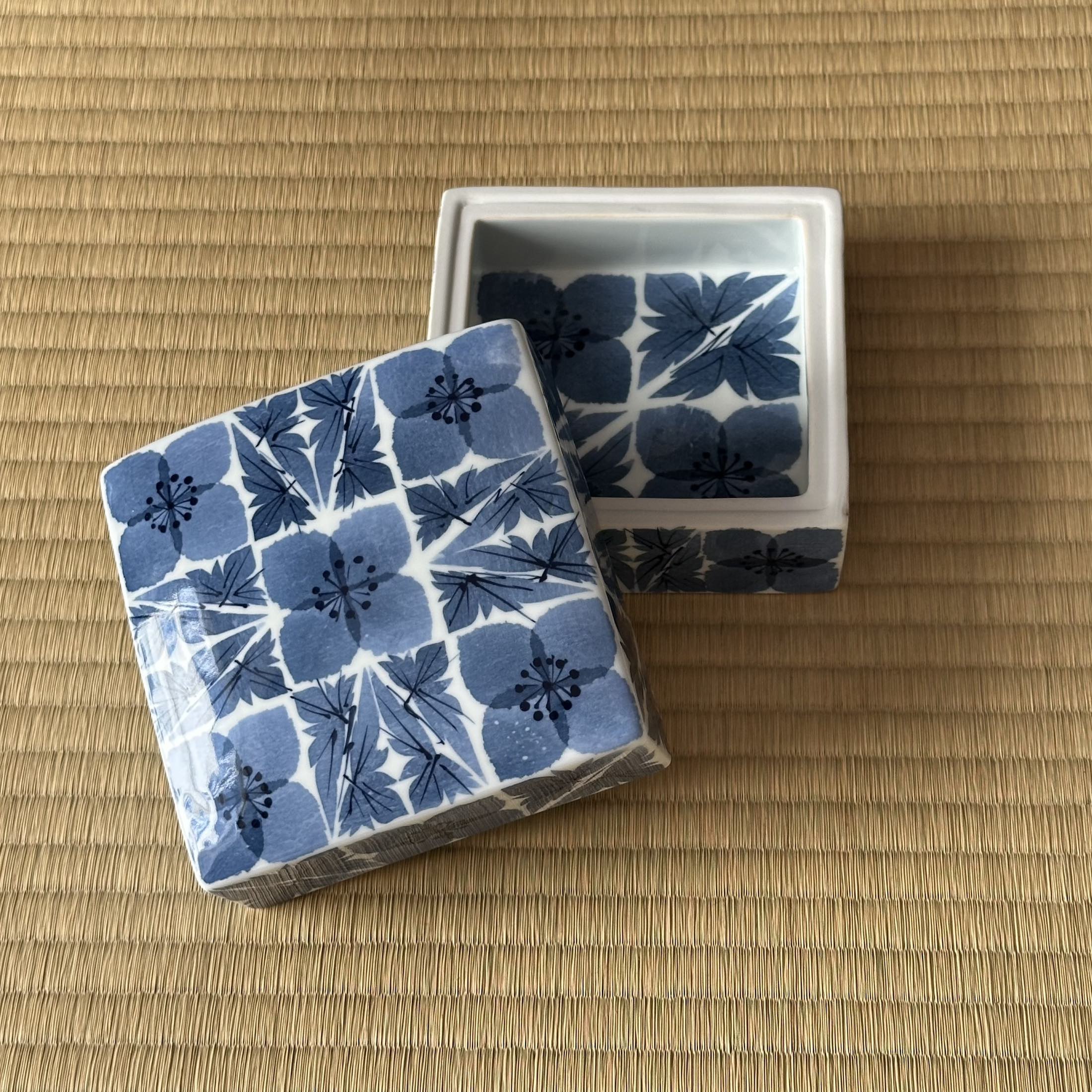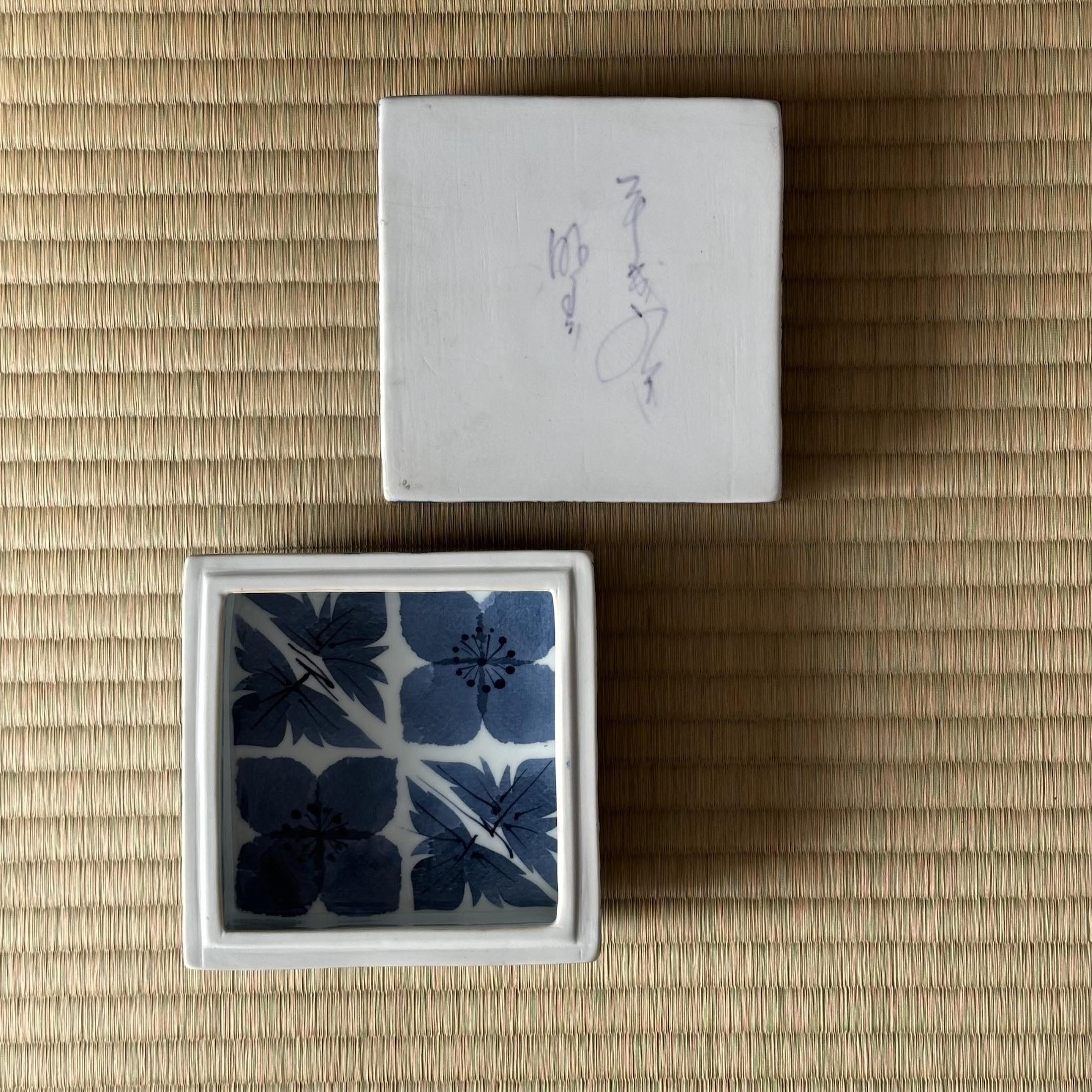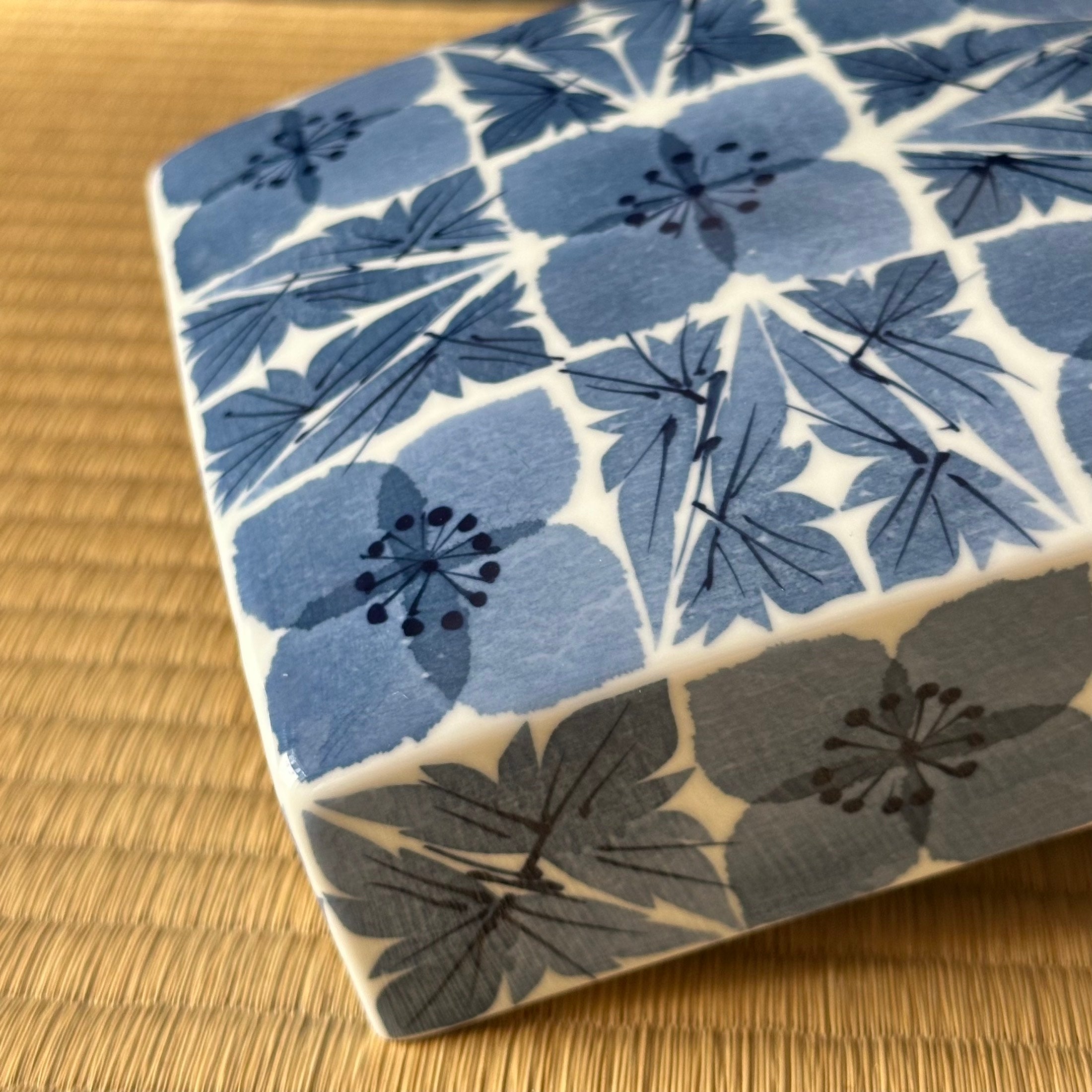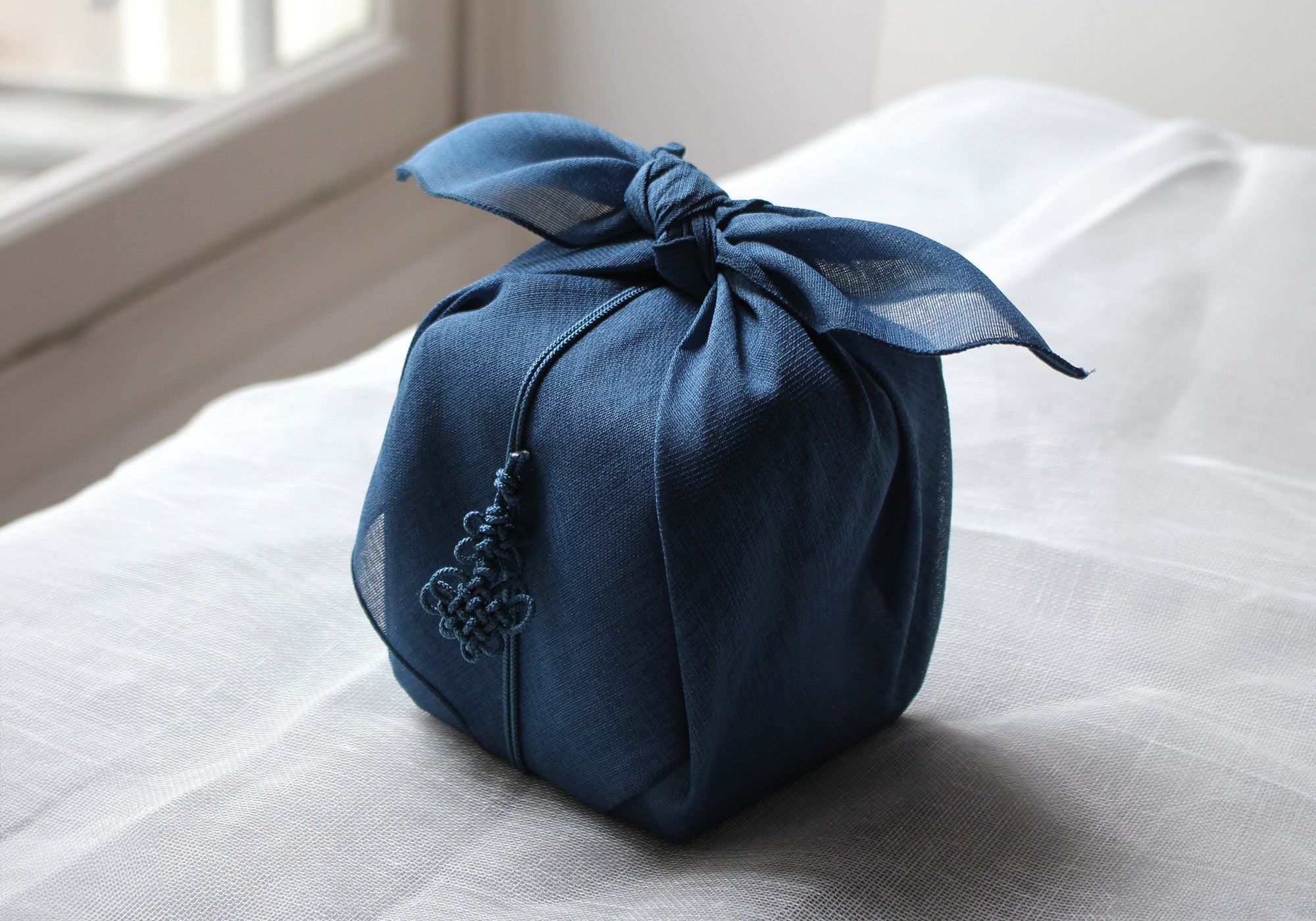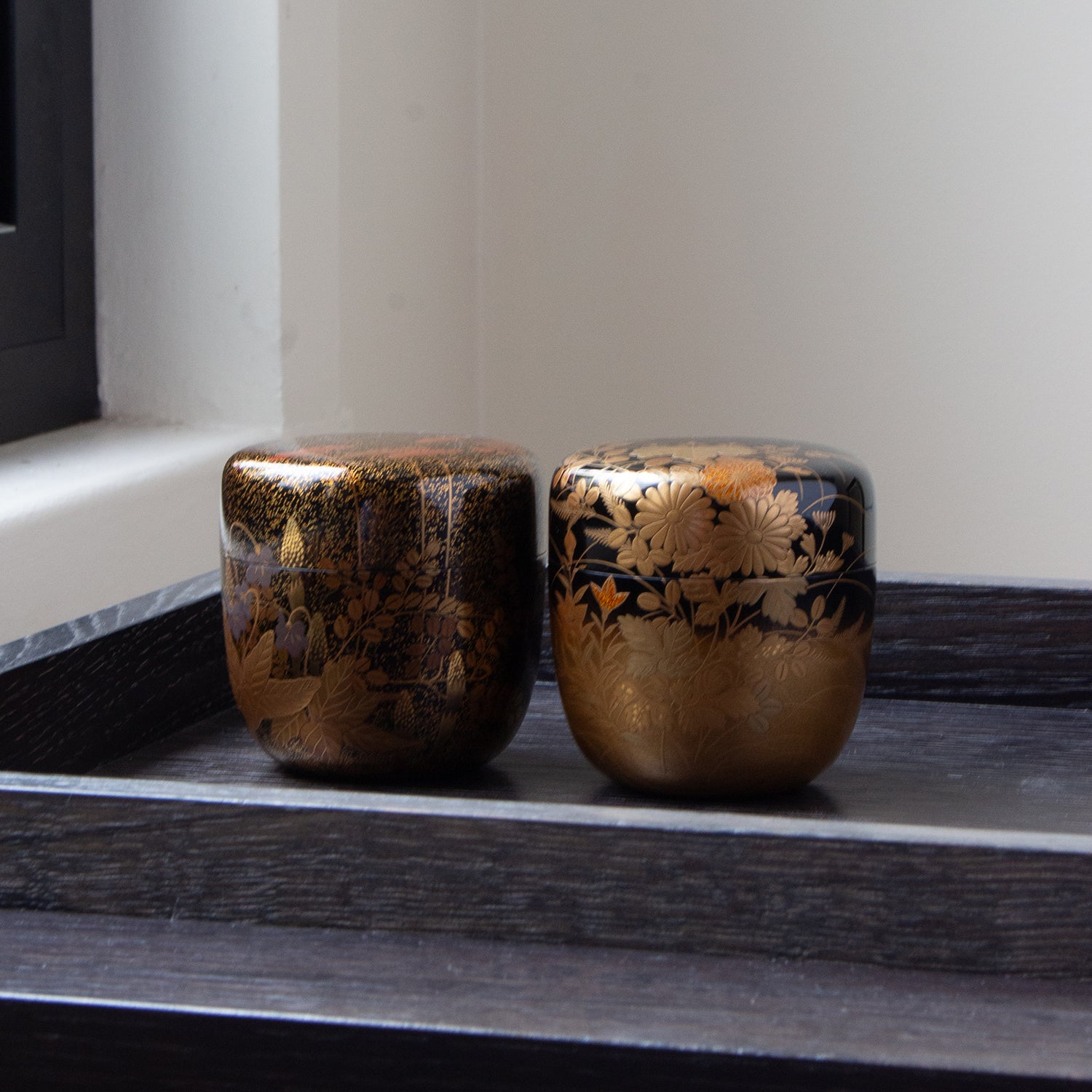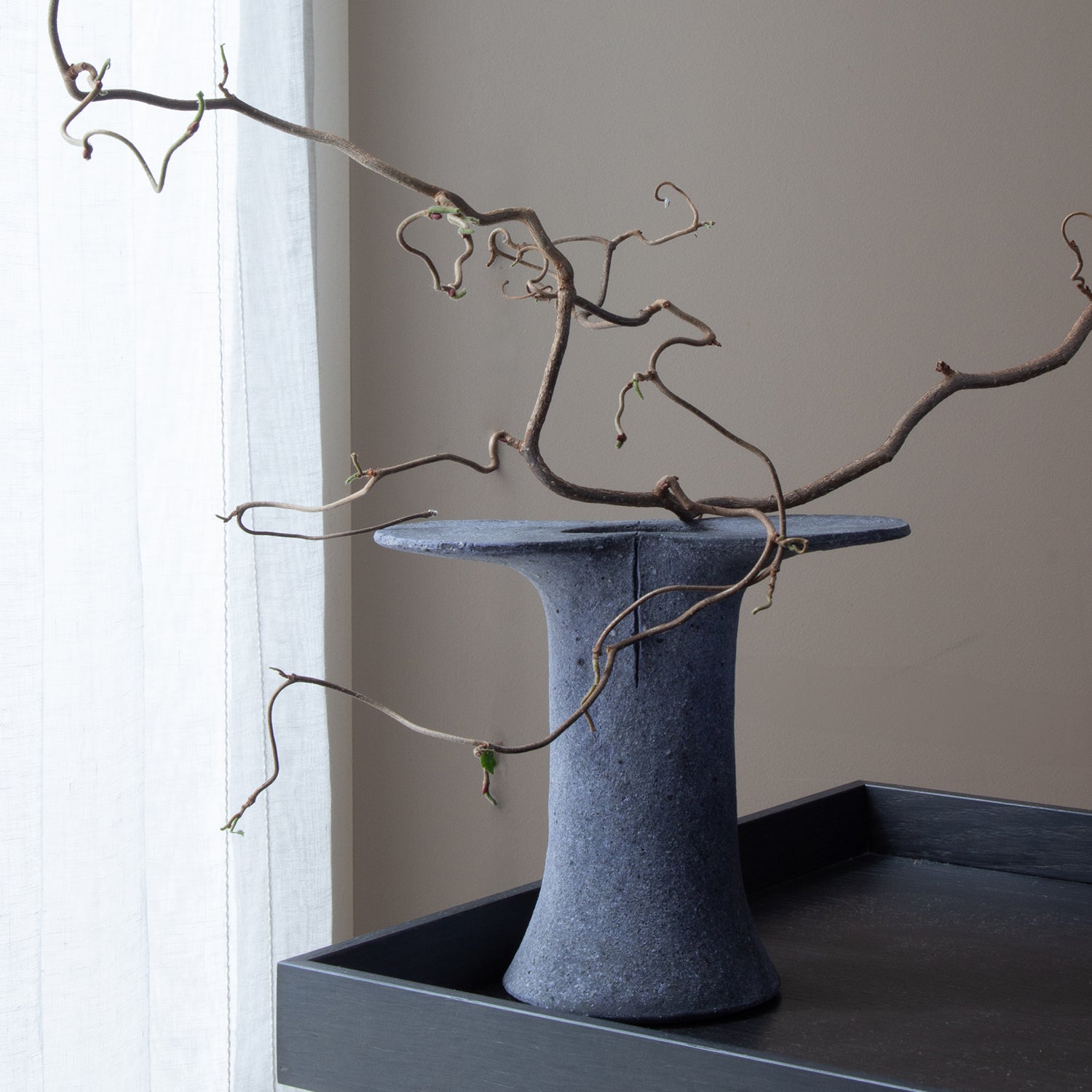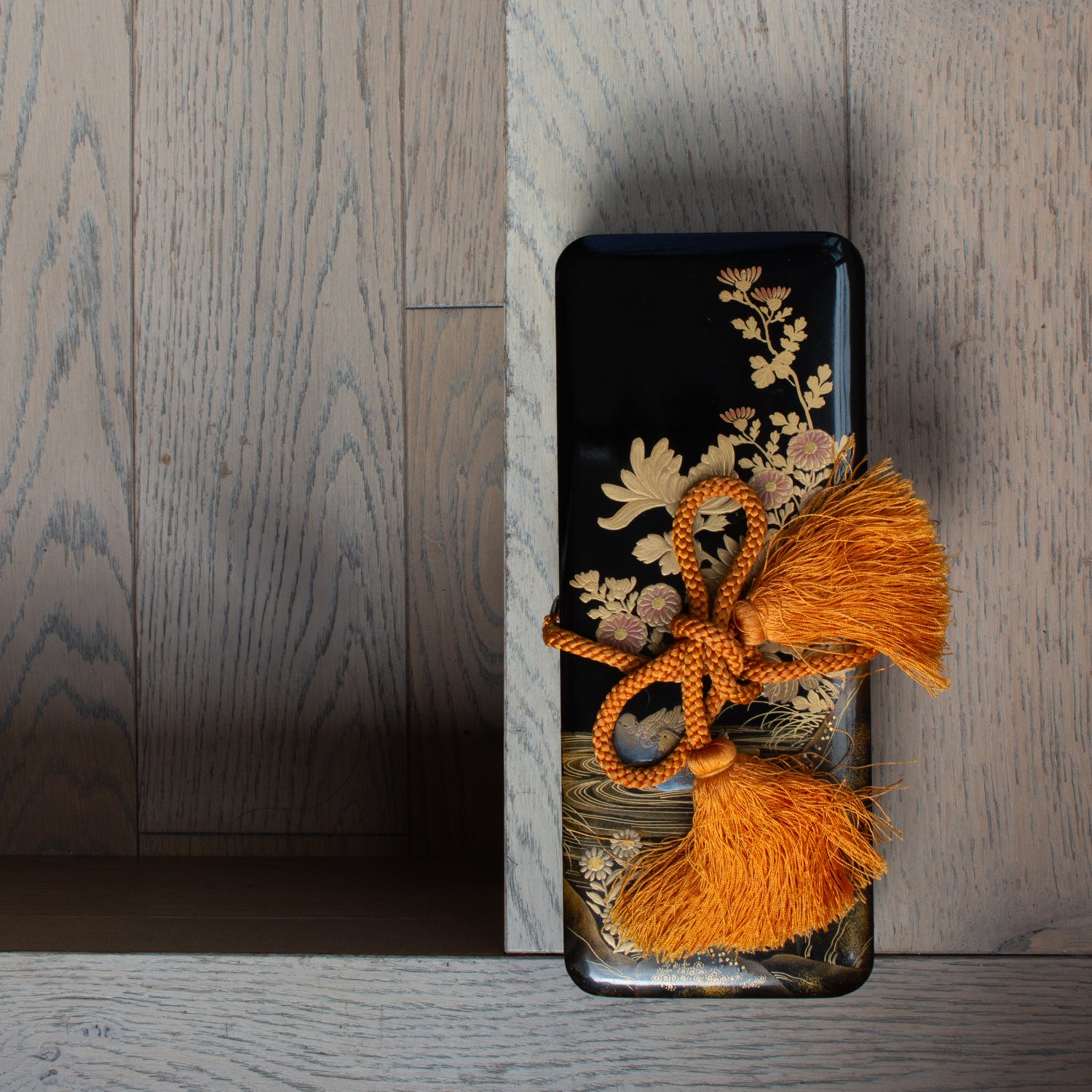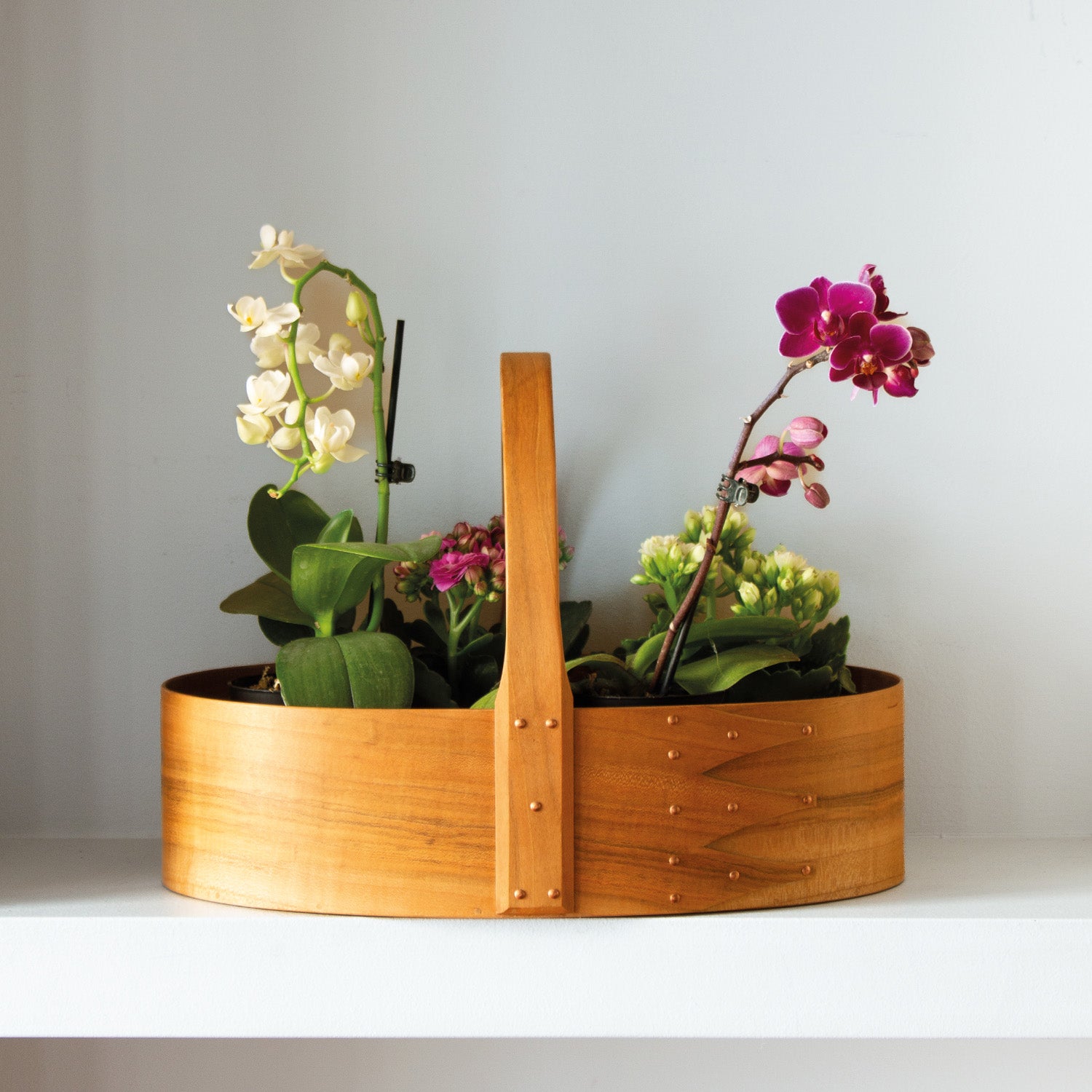Decor and techniques
The form originates from a precisely executed kurinuki (carving): the volume is first carved from the solid block, then patiently hollowed out, so that the walls retain their presence while the lid fits perfectly. Next comes the washi zome (stencil), applied
On the almost dry clay: washi paper masks guide the application of gosu (cobalt) according to the sometsuke (underglaze blue) technique, giving the petals their velvety flat surfaces with edges naturally softened by the fibers; the veins and flower centers, painted with a firmer brushstroke, add further density to the decoration. A translucent glaze unites the whole, preserving the white's clarity and giving depth to the blue.
Form and use
The box is square, with subtly softened corners and a very slightly domed lid whose lines gently follow the contours of the box. Designed for presenting wagashi (confectionery) during the tea ceremony, it highlights the regularity of the pattern that runs seamlessly from the lid to the body and is repeated inside, appearing with perfect clarity. Its proportions and dimensions give it a strong visual presence, and it is perfectly suited for both decorative and practical contemporary use.
The craftsman
Katsumi Eguchi (Saga, Kyushu, 1936), a full member of the Japan Kōgei Association, formalized the use of washi zome in ceramics while also developing pieces using kurinuki. His work, particularly on porcelain, was recognized in 1994 by Saga Prefecture as an Important Intangible Cultural Property for "washi dyeing for ceramic decoration." A regular exhibitor and award winner at the Japan Traditional Craft Exhibition, he has received numerous accolades, including the Asahi Prize, the Prime Minister's Prize at the West Japan Ceramic Art Exhibition, and the Japan Ceramic Society Prize (1985). In May 2024, the Kyushu Prefectural Ceramic Museum (Arita) dedicated a special exhibition to him for his 88th birthday, showcasing seventy years of his artistic creations. His studio is located in Takeo, Saga.
Presentation
The piece is signed by the craftsman under the base. It is presented in nijū-bako (double box): a red lacquered box closed by a sanadahimo (cord), then a kiribako (paulownia) box bearing the name of the work, the signature and the seal of the craftsman, also closed by a sanadahimo.
Place of manufacture
Japan, Saga Prefecture, Takeo City.
Dimensions
Height 9 cm, width 12.5 cm, depth 12.5 cm.
Weight
Total weight approximately 2.5 kg.
Materials
Porcelain, cobalt gosu, translucent glaze
State
Very good condition.


